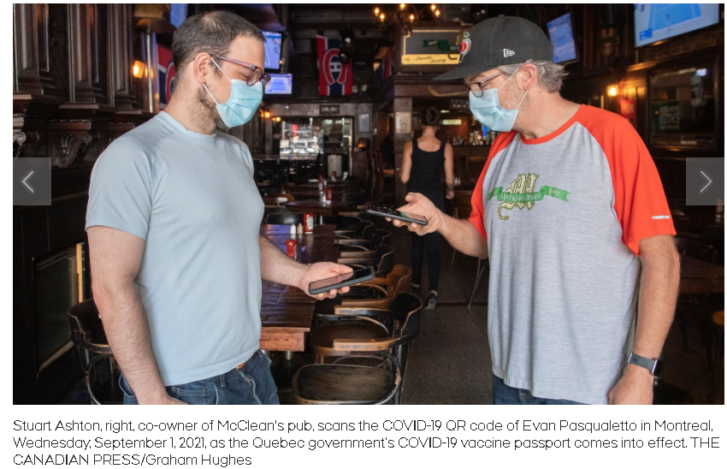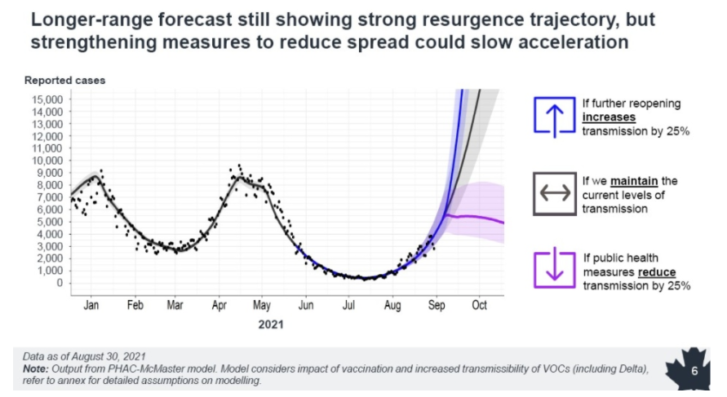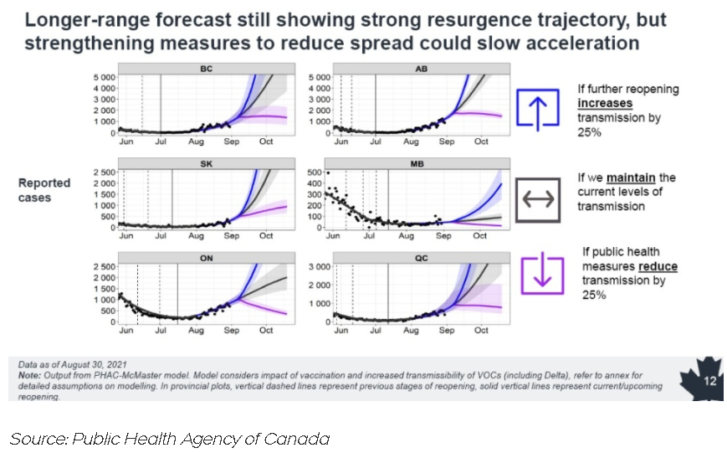TORONTO — Reported daily COVID-19 caseloads in Canada could reach unprecedented highs later this month if current levels of virus transmission are not reduced, new federal modelling data shows.
On the eve of the Labour Day weekend, chief public health officer Dr. Theresa Tam took aim at young adults, describing an “urgent need” for more people between the ages of 18 and 39 to get vaccinated in order to prevent a rapid worsening of Canada’s COVID-19 situation.

“The moment you get people back indoors … we will see accelerations,” she said Friday at a press conference.
Data released by the Public Health Agency of Canada (PHAC) shows that 74 per cent of those between the ages of 18 and 29 and 77 per cent of those in their 30s have been fully vaccinated, versus 82 per cent of those in their 40s and even higher percentages of older age groups.
In addition, Tam said, those younger adults “continue to have the highest rates of infection,” in part because they are more likely to have close contact with people outside their household for work-related or recreational reasons.
There is also a regional disparity in vaccination rates. While 84 per cent of eligible vaccine recipients across Canada have received at least one dose, the rate is only 78 per cent in Alberta and 76 per cent in Saskatchewan.
From mid-July to mid-August, Tam said, the COVID-19 infection rate was 12 times higher among the unvaccinated than the vaccinated, and the hospitalization rate was 36 times higher.
PHAC estimates that 5.2 million eligible Canadians have not yet received any COVID-19 vaccination, while another 2.5 million are only considered partially vaccinated.
“The bottom line is that millions of people across Canada remain unvaccinated and at high risk of COVID-19 infection and severe illness outcomes,” Tam said.
A BLEAK FALL FORECAST
Tam also called on all Canadians to limit their contacts as summer comes to a close, sending many back to schools and workplaces.
“Right now is not the time to gather in huge numbers with people that are not in your household, without taking significant layers of protection,” she said.
However, the chief doctor repeatedly emphasized that the country still has a “window of opportunity” to avoid skyrocketing case counts and an overwhelmed health-care system later this month, suggesting that renewed provincial restrictions could have an impact.
“Of course we can do something about a resurgence, and I’ve seen provinces do that,” she said.
The PHAC modelling data suggests that if public health measures are able to reduce the level of transmission across the country by 25 per cent, the fourth wave of the pandemic could soon plateau at a lower daily infection rate than the peaks of the second and third waves.

PHAC reports that Canada is experiencing “ongoing rapid acceleration” of COVID-19 activity, including in cases causing severe illness. Tam said that the number of new hospitalizations related to COVID-19 in Canada has more than doubled since the last modelling was released on July 30, and is now above 1,200 per day.
She attributed the increase in virus activity to slow vaccine uptake and an “earlier than expected reopening” in some parts of the country.
There is not yet any indication that the fourth wave is resulting in an increase in deaths among COVID-19 patients, the data shows.

FIRST BRIEFING SINCE ELECTION CALLED
Friday was the first time Tam or other PHAC officials directly addressed reporters since the federal election was called in mid-August. Such press conferences had been a regular occurrence prior to the election.
The modelling was initially slated to be released without a press conference, in what would have been a departure from PHAC’s usual practice. The agency reversed course on that decision last week, amid questions about changing communications strategy during the federal election.
Asked about the reversal, Tam said that she had been communicating with the public during the election campaign through written press releases and her social media accounts, and hinted that there will be more press conferences to come.
“Given where the epidemic is heading, I expect to be providing regular briefings to all of you,” she said.

